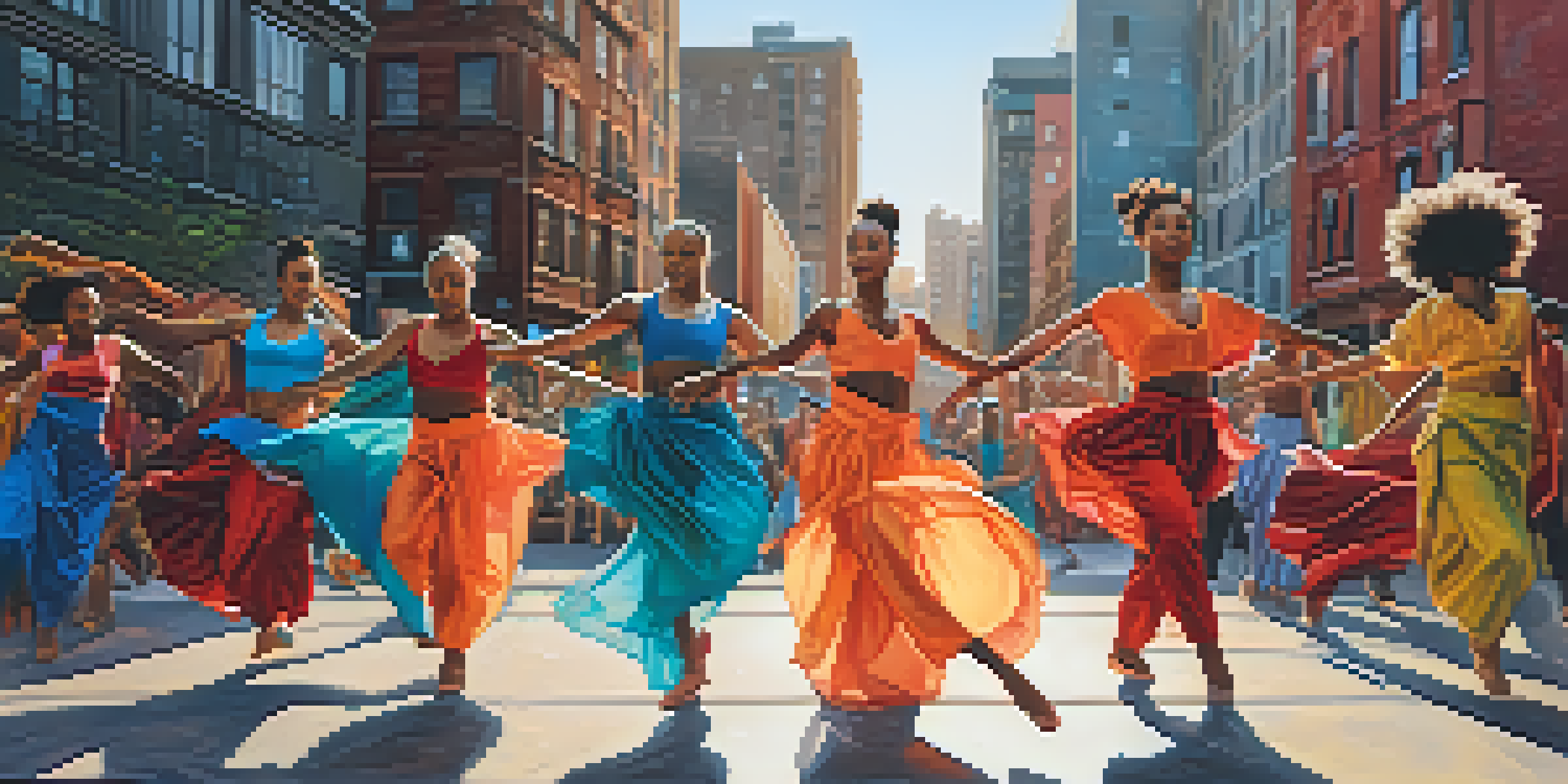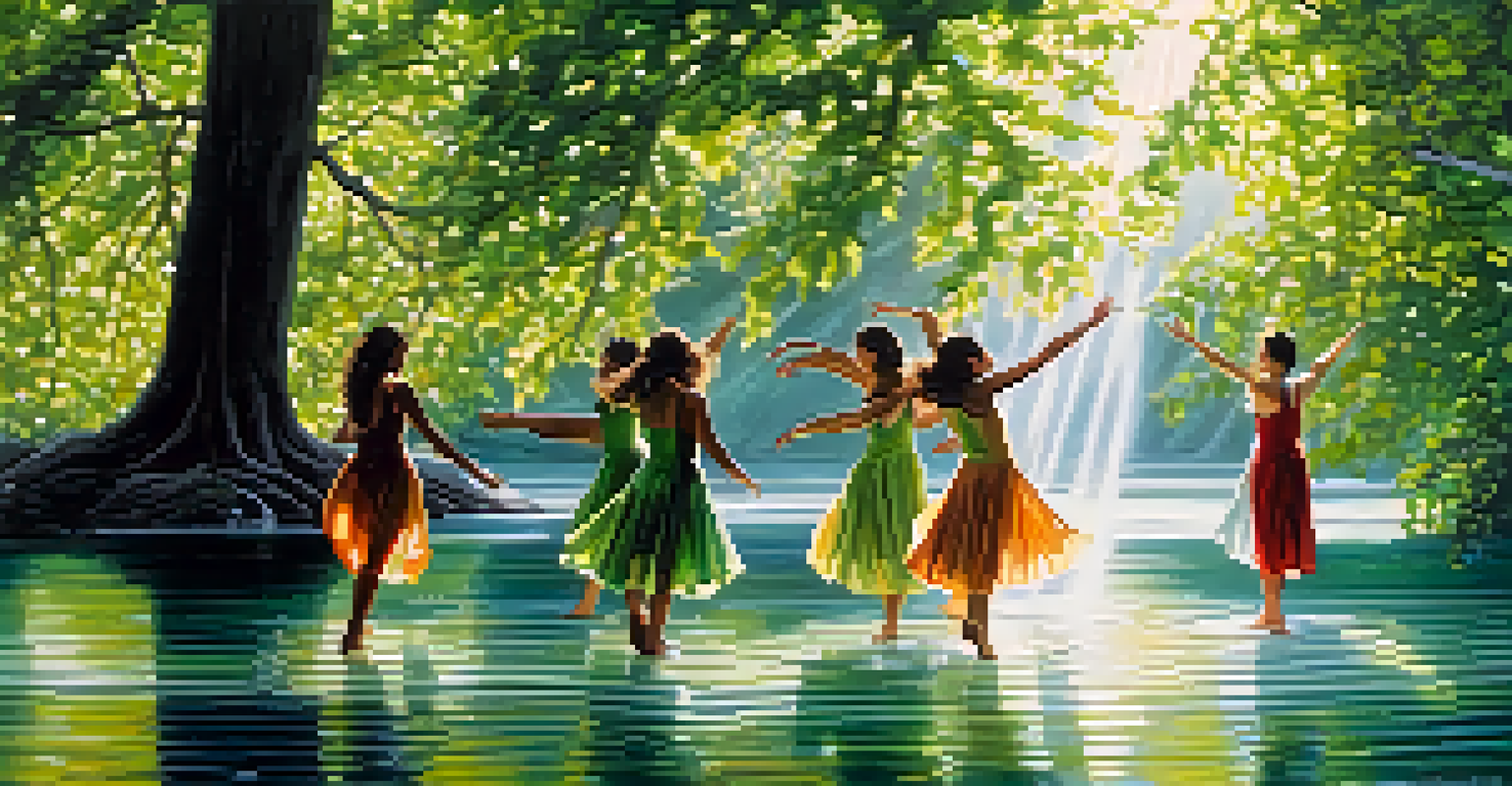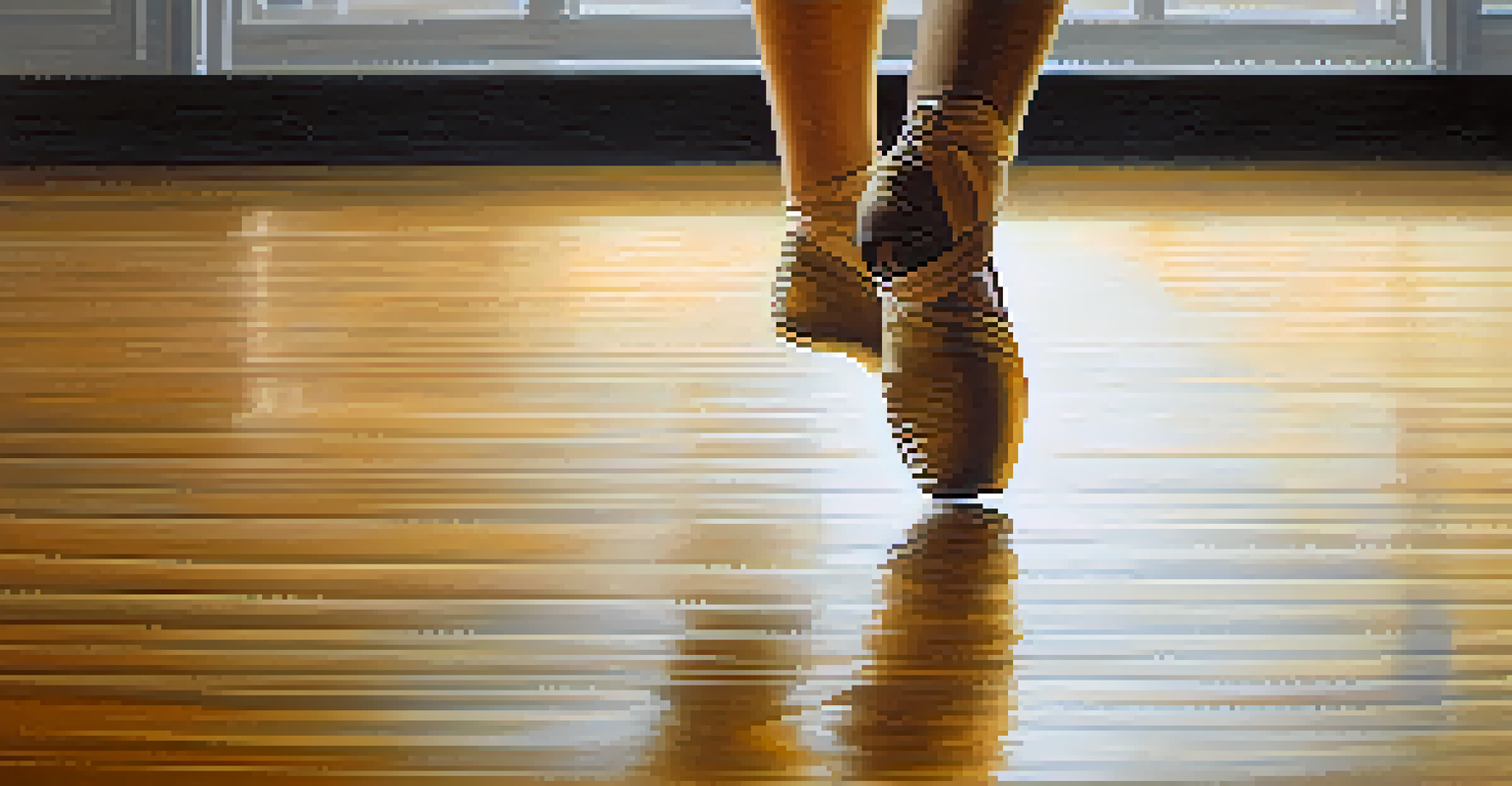Cultural Dialogues: How Contemporary Dance Reflects Global Issues

The Evolution of Contemporary Dance in Global Contexts
Contemporary dance has evolved significantly over the years, merging various styles and cultural influences. This evolution reflects the changing dynamics of our global society, where artists draw inspiration from their unique backgrounds and experiences. As a result, contemporary dance serves as a powerful medium to express complex issues, such as migration, identity, and social justice.
Dance is the hidden language of the soul.
For instance, many choreographers incorporate movements and techniques from traditional dances of their cultures, creating a dialogue between the past and present. This blending of styles not only honors cultural heritage but also highlights the interconnectedness of our global community. Through this lens, contemporary dance becomes a platform for storytelling that resonates with diverse audiences.
Ultimately, the evolution of contemporary dance mirrors the fluidity of cultural exchange in today's world. As issues arise on a global scale, dancers and choreographers respond with innovative works that challenge perceptions and ignite conversations. This artistic evolution encourages viewers to engage with the world around them and consider their role in it.
Dance as a Response to Social Justice Movements
In recent years, contemporary dance has increasingly been used as a form of protest and advocacy, addressing pressing social justice issues. Choreographers have harnessed the expressive power of movement to bring attention to topics like racial inequality, gender rights, and environmental concerns. This use of dance as activism creates a visceral connection to the struggles faced by marginalized communities.

For example, performances inspired by the Black Lives Matter movement integrate powerful imagery and emotive choreography to convey messages of resilience and hope. These works invite viewers to reflect on their own beliefs and actions, fostering a deeper understanding of the issues at hand. Dance becomes a vehicle for empathy, encouraging audiences to consider the human experience behind the headlines.
Dance as a Voice for Change
Contemporary dance increasingly serves as a powerful medium for addressing social justice issues and fostering empathy.
Moreover, collaborations between dancers and activists often amplify the impact of these performances. By merging art with activism, contemporary dance not only entertains but also educates and inspires change. This synergy reinforces the idea that art can be a catalyst for social transformation, highlighting the role of dance in shaping societal narratives.
Exploring Identity Through Movement and Expression
Contemporary dance provides a unique platform for exploring and expressing identity, particularly in a multicultural world. Dancers often draw from their personal experiences, reflecting their cultural backgrounds, gender identities, and lived realities. This exploration of identity not only enriches the performance but also fosters a sense of belonging among audiences who may share similar experiences.
Art can never be a monopoly of the privileged few; it must belong to the people.
For instance, choreographers may tackle themes of diaspora and belonging, conveying the complexities of navigating multiple cultures through movement. This narrative can resonate deeply with viewers, offering them a chance to see their own stories reflected on stage. In this way, contemporary dance becomes a mirror, allowing individuals to confront and celebrate their identities.
Moreover, the collaborative nature of contemporary dance encourages diverse voices to come together, creating a tapestry of perspectives. Each dancer's unique background contributes to the overall narrative, enriching the performance and inviting audiences to engage in a broader dialogue. This exploration of identity through dance underscores the importance of inclusivity in the arts and the power of shared experiences.
Using Dance to Address Climate Change and Environmental Issues
As climate change continues to pose a significant threat to our planet, contemporary dance has emerged as a medium to raise awareness and inspire action. Choreographers are increasingly using movement to explore environmental themes, highlighting the urgency of the crisis through powerful imagery and emotive storytelling. This artistic approach allows audiences to connect with environmental issues on a personal level, fostering a sense of responsibility and urgency.
For example, some performances incorporate elements of nature, such as using water or earth in their choreography to symbolize the fragility of our ecosystems. These creative representations serve to remind viewers of the beauty and vulnerability of our environment, encouraging them to reflect on their impact. By translating complex scientific concepts into movement, dance makes the conversation about climate change more accessible and relatable.
Cultural Exchange Through Dance
Contemporary dance facilitates cultural exchange by enabling artists to share diverse narratives and experiences across borders.
Furthermore, collaborative projects between dancers and environmental organizations amplify the impact of these performances. By bridging the gap between art and activism, contemporary dance can mobilize communities and inspire collective action for a sustainable future. This synergy of creativity and purpose highlights the potential of dance to drive meaningful change in addressing global challenges.
Contemporary Dance as a Tool for Cultural Exchange
One of the most remarkable aspects of contemporary dance is its ability to facilitate cultural exchange and understanding. As artists travel and collaborate across borders, they share their unique perspectives and experiences, fostering a rich dialogue between cultures. This exchange not only enhances the artistry of contemporary dance but also promotes empathy and appreciation for diverse narratives.
For instance, international dance festivals often feature performances from various countries, showcasing the rich tapestry of global dance traditions. These events create opportunities for artists to learn from one another and develop new works that reflect their shared experiences. Audiences are then treated to a diverse range of perspectives, deepening their understanding of different cultures through the universal language of movement.
Moreover, workshops and residencies that bring together artists from different backgrounds encourage the exploration of cross-cultural themes. This collaborative environment nurtures creativity and innovation, allowing dancers to experiment with new ideas and techniques. Ultimately, contemporary dance acts as a bridge between cultures, fostering connections that transcend geographical boundaries.
How Technology Influences Contemporary Dance
In today's digital age, technology plays a significant role in shaping contemporary dance, influencing how it is created, performed, and experienced. Choreographers are increasingly integrating multimedia elements, such as video projections and virtual reality, to enhance their storytelling. This innovative use of technology expands the possibilities of dance, allowing artists to engage with audiences in new and exciting ways.
For example, some performances utilize live feeds or interactive elements, inviting audience participation and creating a dynamic experience. This interplay between technology and dance encourages viewers to consider their relationship with the digital world and its impact on human connection. By blending the physicality of dance with the virtual realm, contemporary artists challenge traditional notions of performance and audience engagement.
Technology Reshapes Dance Experience
The integration of technology in contemporary dance enhances storytelling and audience engagement, redefining traditional performance dynamics.
Additionally, social media platforms have become vital tools for dancers to share their work and connect with global audiences. This accessibility allows for a broader reach, enabling artists to gain recognition and support from diverse communities. As technology continues to evolve, it will undoubtedly shape the future of contemporary dance, driving innovation and expanding the dialogue around global issues.
The Role of Audience Engagement in Contemporary Dance
Audience engagement is a vital aspect of contemporary dance, as it shapes the overall experience and impact of a performance. Unlike traditional forms of dance, contemporary works often invite viewers to actively participate in the storytelling process. This engagement fosters a deeper connection between the audience and the performers, encouraging a shared exploration of the themes presented on stage.
For instance, some choreographers create immersive experiences that involve the audience, blurring the lines between performer and observer. This interactive approach allows viewers to become part of the narrative, enhancing their emotional investment in the work. When audiences feel personally connected to the themes being explored, they are more likely to reflect on their own lives and the global issues at hand.

Moreover, post-performance discussions and workshops further enhance audience engagement, providing opportunities for dialogue and reflection. These interactions can deepen understanding and inspire action, as viewers contemplate the implications of what they've witnessed. Ultimately, the role of audience engagement in contemporary dance highlights the power of art to provoke thought and inspire change in the face of global issues.